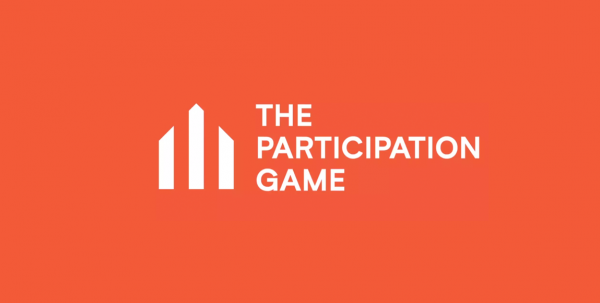
Imagine life without smart phones…i.e. 2006.
Today, the average American looks at their phone 46 times a day. And that didn’t happen a decade ago. (You’re probably reading this on your phone.)
Consumer messaging has changed forever – and brand connectivity has been redefined in the process.
The traditional world of media is gone and top down messaging is high school.
Way back ten years ago, media was defined as age and income. Marketers dropped points onto consumers such as “women, 18 to 35.” Drop enough points and drive sales was the formula. As little sense as that makes today, marketing budgets are still built with remnants of this thinking.
Hanging onto the TV commercial as the majority of the marketing mix is akin to believing in castles as fortresses. It was great idea for about five hundred years until gunpowder was invented.
They look great in the boardroom, but only 1/3 of TV commercials are watched live. It’s just bad math. We believe brand marketers need to move on and change their approach before the internet blows a hole in their business.
Six years ago, we felt the need to better understand consumer connectivity with brands – and we knew that the basic demographic info just wasn’t cutting it. This ecosystem was informing programming – and we were convinced it was time for a change.
We commissioned the first of five annual US studies, isolating 1,000 millennial consumers and asked them to name their three favorite brands – unaided. Just fill in three empty boxes.
Pull down menus dug deeper into how and why they were connecting. We asked about emotions, channels – and published the results with a Favorite Brands ranking report. Each year, we attacked the problem from different angles – but kept the baseline 3,000 responses as our benchmark.
The result is a top 100 brands report, averaged over five years – with 15,000 responses. This survey shows the state of consumer involvement with brands based solely on the ones they feel best about.
There are several key-takeaways that inform our agency’s creative and digital strategy going forward:
- Advertising budgets do not equate to popularity. In fact, advertising too much may be a sign of desperation. We see favorite brands that spend very little making the list.
- If the millennial audience is a bellwether to what’s expected from brands, we can sum up the communications brief as follows: make me look good, make me feel good and keep me entertained.
- Original ideas get permission to start the conversation – with a relevant connection platform that fits the brand. However – NONE OF THIS matters without two-way communication.
We took the top 100 list and assembled case studies of their programming and activities. Sorting through hundreds of cases, led us to the thesis for our upcoming book, The Participation Game. We believe consumers don’t consume advertising. They participate in brands. Participation is the X factor in marketing.
Along the way, we’ve been tracking interesting and original ideas – and have more than 3,000 of these on our site, nortycohen.com. We’re big believers in celebrating and sharing original ideas and using them to create new ones.
As we look at each carefully, we can see a subtle twist – where consumers can make the easy choice to jump on board and support a brand. Sometimes it’s a single execution – but more often than not, it’s a mindset. It’s a mutual respect that moves easily through the purchase cycle from awareness building to loyalty.
A few examples:
- Several years ago, Whole Foods was planning a new store in Carbondale, Colorado – in the foothills of Aspen. They had a regional budget – and spent a few thousand dollars shooting video snippets of local residents. Shot with the backdrop of their majestic mountains, they proclaimed that they deserved a Whole Foods – and their town was the best place to live. They had the healthiest people who genuinely represented the wholesomeness of Whole Foods. These videos were populated on social pages – then reposted by the residents. When the store finally went up, there was no need to advertise. They had won.
- Van’s has staked their claim on the skateboarding community – but redefined their spirit as “individualism.” This emotion becomes a shared one with everyone who buys the brand. In order to promote it, Vans created a user site, livingoffthewall.vans.com – in which consumers are invited to show how they are inspired. For the initiated, there’s a pull down credo that helps users understand the mission. They then submit their videos – and the sharing fest begins.
- Wendy’s has been reaching out to consumers in every way possible – and they’ve been doing it consistently for years. It started with their commercials that featured tweets set to song. Then their social persona took over and has real, everyday conversations with friends. The “phenomena of Nuggets for Carter” is just one example of what happens when a brand is in a day-to-day dialogue with consumers. Here’s a high school kid who is bored one day – and tweets at Wendy’s – “how many re-tweets for free Chicken Nuggets for a year?” Their community manager shot back immediately – 18 million. No corporate committee to assign a value – just an in your face The race was on and everyone wanted to help Carter get his nuggets.
There are best practices – and certainly a lot of logic within these new levels of connectivity. Friends of friends tell the story better than advertisers can. And none of this could have happened ten years ago. Shared content is much more likely to impact a consumer’s choices than advertising. Our studies showed it is 2.5 more likely for a brand to be adopted by friends of friends that TV, Facebook ads or You Tube ads combined.
Ultimately, it’s not your target market you care about. It’s your target’s target.
You get there by driving consumer participation.
Contributed to Branding Strategy Insider by: Norty Cohen, CEO and Founder of Moosylvania and author of The Participation Game, which examines how and why consumers adopt brands.
Originally published by Branding Strategy Insider

